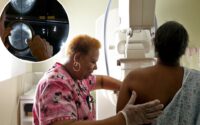Childless women over age 35 binge drink more: addiction experts
Childless women aged 35 are at the highest risk of binge drinking and Alchohol Use Disorder (AUD), a new study published in the journal Addiction.
The study also found that today’s generation of middle-aged women and those without children are also more likely to consume alcohol excessively.
Compared to men, the consequences among reproductive-age women who binge drink or develop AUD include an increased risk for liver disease, alcohol-related injuries, breast cancer, and alcohol-related deaths.
Researchers at Boston University examined data from Monitoring the Future, an annual survey of high school students’ substance use behaviors in the US, including nearly 10,000 surveys completed by women at age 35 between 1993 and 2019, corresponding to high school senior years between 1976 to 2002.
In the surveys, the participants listed their parental status, age of first-time parenting, and whether they engaged in binge drinking (consuming four or more drinks in one sitting) in the past two weeks, or developed AUD symptoms in the past five years.
The results concluded that women who turned 35 between 2018 and 2019 were nearly 60% more likely to binge drink or report AUD symptoms than women who turned 35 between 1993 and 1997.
This was noted as only 39% of women in 2018-2019 had children before age 30, compared to 54% of women in 1993-1997.

As more research has shown that Americans are engaging in concerning drinking habits, this is the first study to analyze the impact of delayed or forgoing parenting on binge drinking among newer generations of middle-aged women.
Women in their 20s and 30s typically reduce their alcohol consumption as they begin planning their pregnancy, but as fewer women in that age group are doing so the percentage of them are continuing worrying about drinking habits continue.
“Because more women are delaying having children in the US, a growing proportion of women fall into the highest risk group,” said study lead author Rachel Sayko Adams, research associate professor of health law, policy & management.
“This growing prevalence of heavy drinking is exacerbated given that excessive alcohol use is increasing overall for middle-aged women in more recent cohorts. Therefore, at-risk alcohol use and consequences are expected to continue increasing in future years, if not addressed.”

Looking for causes of this concerning trend, researchers point to rampant marketing and social media messaging that normalizes drinking, such as “rosé all day” and “wine mom” culture.
“Alcohol industry messages around drinking for stress relief and enjoyment have always been part of the industry’s advertising strategy, and we’ve seen this emerge on social media platforms, particularly geared towards people who parent,” said study senior author Katherine Keyes, professor of epidemiology at Columbia University Mailman School of Public Health.
“Promotion of alcohol use for moms to deal with the stresses of motherhood in Facebook and Instagram groups have common hashtags such as #winemom, #sendwine, and #mommyjuice. Simultaneously, there has been a rapid increase in alcohol products targeting middle-aged women—such as low-calorie seltzers, pink beverages, and expressions such as ‘rosé all day.’”
While women in their mid-30s may be leading the charge, Americans of all demographics are drinking at concerning levels.
In fact, Americans are now drinking as much alcohol as in the days of the Civil War.

Over the course of 2021, the average American consumed 2.51 gallons of ethanol — the alcohol found in wine, beer and spirits — compared with 2.53 gallons in 1860, the brink of the Civil War.
The National Institute on Alcohol Abuse and Alcoholism defines a “standard drink” as 0.6 fluid ounces of ethanol, meaning that Americans 14 and older are consuming about 535.5 standard drinks on average in a year.


